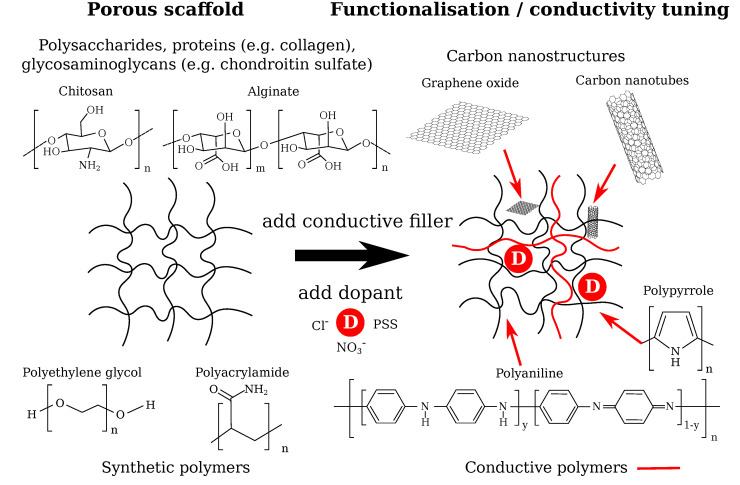Figure 1.
Potential design routes for electrically conductive scaffolds to be used in cartilage tissue engineering. Possible materials for the porous, non-conductive scaffold and for the conductivity tuning using conductive fillers and dopants are shown. The dopant changes the conductivity of the scaffold by adding or removing an electron from/to the polymer, which causes a lattice distortion inducing polarons that yield increased electric conductivity [19]. Carbon nanostructures can be integrated into the scaffold network and provide a pathway for the electric current [20,21]. The final electroactive hydrogel conductivity will be strongly dependent on the degree of percolation between the conductive fillers, purity and crystalinity of the conductive polymer, doping level, redox state of the conductive filler, diffusibility of and ion mobility in the final hydrogel, hydrogel porosity, and additional factors relevant for tuning the final hydrogel conductivity.

